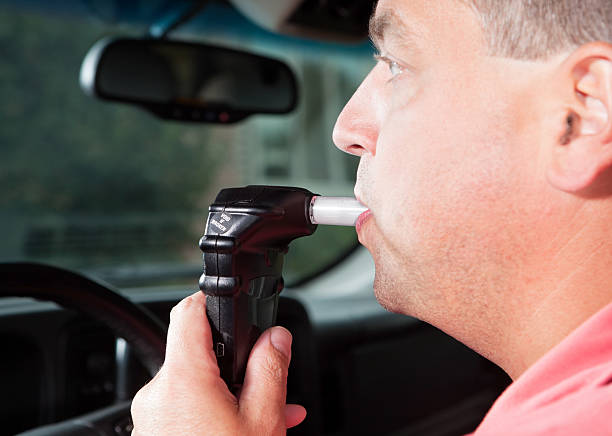Road safety is a crucial concern for individuals, communities, and governments worldwide. Vehicular accidents, often resulting from impaired driving due to alcohol consumption, have devastating effects on lives and property. In the pursuit of safer roads, various technological solutions have been introduced over the years. Among these, the alcohol ignition interlock has emerged as a particularly effective measure in deterring drink-driving and promoting responsible driving habits.
Understanding Alcohol Ignition Interlocks
An alcohol ignition interlock is a breathalyser device installed in vehicles that requires the driver to complete a breath alcohol test before starting the engine. If the individual’s blood alcohol concentration (BAC) exceeds a preset limit, the vehicle will not start, preventing potential drunk-driving incidents. These devices are increasingly mandatory for certain driving offences in many jurisdictions, reflecting a commitment to uphold road safety standards.
The Prevalence of Drink-Driving
Despite stringent laws and awareness campaigns, drink-driving continues to be a persistent issue. The consequences of driving under the influence are not restricted to the offending party; passengers, pedestrians, and other road users can fall victim to such negligent behaviour. Hence, there’s a pressing need for more effective preventative measures to safeguard all roadway stakeholders.
Advantages in High-Risk Drivers
Alcohol ignition interlocks are highly beneficial when used as part of rehabilitation programs for repeat drink-driving offenders. They serve as a controlled pathway for high-risk individuals to regain their driving privileges while maintaining a check on their adherence to sober driving. As a result, these individuals can contribute to society’s productivity while receiving an opportunity to reform their driving habits.
Impact on Recidivism Rates
Studies have shown that alcohol ignition interlocks significantly reduce recidivism rates among those previously convicted for drink-driving. The constant physical reminder and routine checks enforced by the device act as potent deterrents, reiterating the seriousness of drink-driving offences and the importance of behavioural change.
Encouraging Longer-Term Sobriety
The success of alcohol ignition interlocks isn’t limited to their period of installation. The habitual nature of performing a breath test to start a vehicle can instil discipline and a heightened sense of responsibility in drivers. This learned behaviour often translates into long-term sobriety, even after removal of the device.
Cost-Benefit Analysis
From an economic perspective, the installation of interlocks can save significant costs associated with drink-driving. Emergency services, legal processes, and healthcare expenditures are just a few areas where expenses accrue following alcohol-related incidents. Therefore, the initial investment in interlocks pales in comparison to the avoided costs of potential accidents.
Rejecting Stigmatisation
A common concern about alcohol ignition interlocks is their potential to stigmatise users. However, the current models are discreet and user-friendly, minimising embarrassment while prioritising safety. Public perception is also shifting towards a positive view of these devices, perceiving them as tools of responsibility rather than shame.
Integration into Corporate Fleets
Corporate adoption of alcohol ignition interlocks in fleet vehicles is another step in the right direction for road safety. It demonstrates an organisation’s commitment to responsible business practices and employee welfare, potentially reducing liability issues related to drink-driving accidents involving company vehicles.
Supporting Legislation and Policy Making
Legislative backing is essential for the widespread adoption of alcohol ignition interlocks. Governments and road safety authorities must devise clear guidelines and policies to facilitate the installation process and ensure compliance by those mandated to use the technology. Such initiatives reinforce the state’s determination to combat drink-driving effectively.
Improvements in Technology
Technological advancements have significantly enhanced the reliability and accuracy of alcohol ignition interlocks. These devices now feature real-time reporting, tamper detection, and data logging capabilities, offering comprehensive surveillance for authorities and peace of mind for concerned parties.
Complementary Safety Measures
While alcohol ignition interlocks are beneficial, they are most effective when combined with other safety measures. Educational programs, regular vehicle checks, and supportive legal infrastructures create a holistic environment for ensuring road safety and preventing alcohol-impaired driving.
Future Developments
As we look into the future of road safety technologies, alcohol ignition interlocks will likely become smarter and more interconnected with other vehicle systems. The potential integration with advanced driver-assistance systems (ADAS) and telematics offers a glimpse of a future where drink-driving could be significantly curtailed, if not entirely eliminated.
Conclusion
To conclude, the installation and use of alcohol ignition interlocks serve as quintessential steps towards a safe driving future. Its benefits transcend mere compliance with the law, providing a foundation upon which drivers can build and maintain sober and responsible driving habits. As society continues to strive for improved safety on the roads, these devices will undoubtedly play a pivotal role in shaping behaviours and safeguarding lives.
